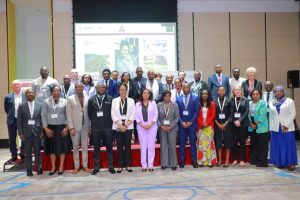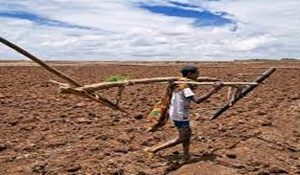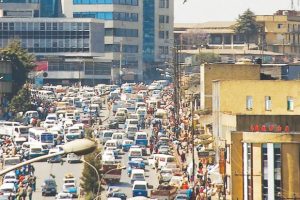BY SOLOMON DIBABA
Agriculture is still the pace setter of the Ethiopian economy and a source of the major export commodities from which the country obtains foreign exchange earnings. Diversification of export of agricultural commodities and increasing their volume and quality for marketing on world markets has proved to be a viable alternative to increase Ethiopia’s revenue in foreign exchange.
Over the last several decades, Ethiopia has depended on coffee, pulses and oil seeds to obtain foreign currency. It is therefore imperative to further diversify export of agricultural commodities by adding value to these products for better completion at the world market. The introduction of cut flowers, live animals, and horticulture products for export has earned the nation better foreign exchange but that is still at its lower scale compared to several Sub-Sahara African countries.
Ethiopia is now engaged in massive import substitution programs primarily in the agriculture sector. The country is now ready to fully produce wheat for local consumption and for export as well. This is a promising trend and is expected to grow over several decades.
The country is still importing edible oil which could have been produced locally. There are several ongoing attempts to produce food oil locally but still there is a long way to go before the country could be self-sufficient in edible oil
and export it to the world market.
Ethiopia has a huge potential for apiary and fishery two food types that have so far not properly utilized. Introduction of modern beehives at low cost and preparation of household managed ponds in which fish could be raised will not only add up to balanced diet for families but can be a means of generating income by selling them at local market. Groups could be organized to undertake such farm activities to enhance production for marketing in far off districts.
With a promising bumper harvest in cotton, the country can produce high quality garments that can even be exported. The industrial parks in the country are already exporting a considerable amount of garments and apparel to countries near and afar earning the nation a considerable amount of forex.
Cluster farming system that was introduced in various regions of the country have proved to be effective in increasing productivity per hectare as more crops are being produced in this way. Cluster farms can easily use agricultural modernization techniques and mechanization that is important to markedly reduce post-harvest losses
Ethiopia’s foreign trade through import substitution mechanisms is growing. Leather products and foot wear from Ethiopia have already proved to be marketable in large amounts and quality but the sector has still not developed to the desired level.
With the introduction of small scale and large scale irrigation schemes in various regions of the country, farmers have been able to produce 2 to 3 times a year including the main agricultural season. Ethiopia has so far utilized less than 3% of its total irrigation potentials which are generally evenly distributed across the country. Regions like Afar, Gambela and Benishanguel and the SNNPRS have started to engage in irrigated farming focusing on the main marketable agricultural products which can also be exported.
Microfinancing institutions across the country have already have the practice in providing loan to able farmers who can use the cash to purchase fertilizers and other agricultural inputs to enhance their productivity.
Profiting from Lemat Development Campaign as the name tells is to be conducted through campaigns in which all the regions in the country are expected to participate. Conducting such development programs in the form of campaign, although possible could face challenges in terms of coordination with regions, zones and districts across the country. The issue of input provision and conducting the campaign along with the regular agricultural practices across the country requires strong managing skills and capacity building at all levels. Besides, it is important to create awareness creation sessions on the campaign so that all concerned will participate in a more meaningful and productive manner.
It is very important to develop simple booklets and manuals that could be readily used as reference for farmers when the DA’s are not around. These materials could be more useful if they are translated in various languages spoken across the country. Moreover is good to develop agricultural demonstration plots in every village as farmers can replicate the good practices on their own homesteads and community owned orchards and vegetable gardens.
It is also important to link food production and diversification with the National Initiative for Green Legacy as one could complement the other in the entire food production cycle. The campaign of Ye Lemat Terufat is still at take off stage and needs to be further popularized in urban and rural settings of the country.
However, there is one important point that needs proper consideration at this stage of the campaign. Campaigns are usually short-lived and not well coordinated and monitored. It is therefore important to link the program with regular agricultural activities in the country. There should be a training and capacity building component for those who are willing to take part in the campaign. Some level of input provision like vegetable seeds, fruit seedlings could be considered to orient the population to actively participate on the campaigns.
As the campaigns are conducted in various ecological settlings in the country, they should be organized in such a way that different approaches should be devised for moisture stress areas and those with better precipitation with potentials for home managed small scale irrigation.
The Ethiopian Herald December 7/2022





